Akupunkturnåle
Acupuncture needles, central to the practice of acupuncture, serve both historical and therapeutic significance within traditional Chinese medicine. Tracing their origins back to ancient China, acupuncture needles have been employed for over 2,000 years. Initially crafted from stones, bamboo, and bones, these needles have evolved considerably due to advancements in metallurgy and medical science. Despite these developments, the fundamental principles underpinning their use have remained grounded in the ancient philosophies of qi (vital energy) and meridians (energy pathways).
In traditional Chinese medicine, acupuncture needles are used to stimulate specific points on the body, known as acupuncture points, to restore the balance of qi flow. This practice is deeply rooted in the belief that an unobstructed flow of qi is essential for maintaining health and well-being. Throughout centuries, the techniques and materials of acupuncture needles have undergone significant transformation. Modern acupuncture needles are typically made of stainless steel, which ensures sterilization and precision while minimizing discomfort and risks of adverse reactions.
Beyond their historical and cultural importance, acupuncture needles have found a prominent place in contemporary therapeutic practices. Today, these needles are employed not just for their traditional curative properties but also for a wide range of modern health issues. From chronic pain management to stress reduction and mitigation of various ailments such as headaches, arthritis, and even infertility, the scope of acupuncture has broadened considerably.
The basic principles of acupuncture involve the careful insertion of these fine, sterile needles into specific acupuncture points on the body. The expected outcomes include the alleviation of physical symptoms, improvement in bodily functions, and overall enhancement of the patient’s quality of life. As such, acupuncture needles continue to be an indispensable tool in both traditional and contemporary medicine, demonstrating a seamless blend of ancient wisdom and modern innovation.
Types of Acupuncture Needles
Understanding the types of acupuncture needles is crucial for both practitioners and patients to ensure an effective treatment. Acupuncture needles come in various materials, sizes, and lengths, each offering distinct benefits tailored to specific needs.
Firstly, the materials used in acupuncture needles can significantly influence the treatment. Stainless steel needles are the most common due to their durability, cost-effectiveness, and resistance to corrosion. Conversely, gold and silver needles, though less prevalent, are also employed for their unique properties. Gold needles are believed to stimulate energy flow and are often used in treatments requiring a calming effect, while silver needles are considered to have a cooling effect, ideal for reducing inflammation.
The size and length of acupuncture needles vary to accommodate different treatment areas and conditions. Needle diameter generally ranges from 0.12 mm to 0.35 mm. Thinner needles, such as those below 0.25 mm, are often used for facial acupuncture or sensitive areas to minimize discomfort. Thicker needles are preferable for body parts with more substantial tissue, like the back or legs. Length also varies, typically from 15 mm to 75 mm, with longer needles being used for deeper tissue penetration needed in some musculoskeletal treatments and shorter needles for superficial or delicate areas.
Practitioners select the appropriate needle type based on several factors, including the patient’s comfort level, the intended stimulation intensity, and the specific acupuncture points targeted. For instance, a patient with deep muscular pain may benefit from longer and thicker needles, whereas someone seeking treatment for facial rejuvenation would require shorter, finer needles.
Illustrating these common needle types can provide clarity: classic stainless steel needles for general use, gold needles for calming and enhancing energy, and silver needles for cooling and anti-inflammatory purposes, each selected based on the intended therapy regimen. Understanding these distinctions enables efficacious and tailored acupuncture treatments.
How Acupuncture Needles Work
Acupuncture needles play a pivotal role in traditional Chinese medicine by manipulating the body’s intrinsic energy flow, known as Qi. Central to this practice are the meridians, or energy pathways, which are believed to distribute Qi throughout the body. By inserting fine, sterile needles into specific points along these meridians, practitioners aim to regulate the flow of Qi, thereby restoring balance and promoting wellness.
The principle of Qi is foundational to understanding how acupuncture needles work. According to traditional beliefs, disruptions or blockages in the flow of Qi can lead to physical and emotional ailments. Acupuncture seeks to alleviate these blockages, enabling a smoother, uninterrupted flow of energy. This is achieved through precise needle placement and technique, which are crucial in eliciting the desired therapeutic effects.
Through needling, several physiological processes are influenced, one of the most significant being pain relief. Research suggests that the insertion of acupuncture needles stimulates the nervous system, leading to the release of endogenous chemicals such as endorphins. These natural painkillers reduce pain perception and promote relaxation. Additionally, needling may enhance circulation by causing vasodilation, which improves blood flow to the targeted areas, thereby facilitating tissue healing.
Scientific studies have provided insights into the mechanisms of acupuncture. For instance, functional MRI (fMRI) scans have revealed that acupuncture can modulate brain activity, thereby influencing the perception of pain and affecting emotional regulation. Moreover, research has indicated that acupuncture can stimulate the release of neurotransmitters and hormones, such as serotonin and cortisol, which can help in managing stress and inflammation.
The importance of needle placement and technique cannot be overstated. Practitioners undergo rigorous training to master the art of locating acupuncture points accurately and employing appropriate needling techniques. The depth and angle of needle insertion, duration of needle retention, and even the method of needle stimulation (such as manual twirling or electrical stimulation) can significantly impact the treatment outcomes.
Safety and Best Practices in Acupuncture Needling
Ensuring the safety and efficacy of acupuncture treatment is paramount. One of the most critical aspects is the utilization of sterile techniques. Acupuncture needles must be single-use, disposable, and come in sterile packaging to eliminate the risk of cross-contamination and infections. Practitioners must maintain a clean and hygienic environment, adhering strictly to medical asepsis protocols, which include thorough hand washing and wearing gloves during the needling process.
Proper training and certification for acupuncture practitioners are essential to guarantee both practitioner proficiency and patient safety. Reputable training programs provide comprehensive education on human anatomy, pathological conditions, and needle placement techniques. Adherence to guidelines set forth by regulatory bodies such as the National Certification Commission for Acupuncture and Oriental Medicine (NCCAOM) in the United States ensures that practitioners meet high standards of practice.
The primary risks associated with acupuncture include minor bleeding, bruising, and localized pain at the needle site. However, these side effects are generally rare and can be mitigated through skilled needling techniques and thorough patient assessment. Practitioners should conduct a detailed medical history review to identify any contraindications, such as bleeding disorders or skin infections. Proper needle insertion depth and angle, along with correct needle retention time, are critical to minimizing adverse effects.
Patient preparation and post-treatment care significantly contribute to a positive acupuncture experience. Before treatment, patients should be advised to wear loose-fitting clothing and avoid excessive intake of food or caffeine. After the session, practitioners should provide guidance on post-treatment rest and hydration, along with instructions to monitor for any unusual symptoms that may require follow-up.
Finding a certified and experienced acupuncturist is vital for ensuring safe and effective treatment. Patients can refer to professional bodies like the NCCAOM or equivalent organizations in their respective countries to locate qualified practitioners. These regulatory standards and professional bodies play a pivotal role in maintaining the quality and trustworthiness of acupuncture practices.
Introduction to Acupuncture and Needles
Acupuncture, an integral component of traditional Chinese medicine, is a practice that dates back thousands of years. Originating in ancient China, acupuncture operates on the principle of balancing the body’s energy flow, known as “Qi” or “Chi.” Practitioners of this time-honored therapy insert fine needles into specific points on the body, purportedly influencing energy pathways, or meridians, to promote healing and well-being.
Historically, acupuncture needles were crafted from materials such as stone, bamboo, or bone. As the practice evolved, these were largely replaced by metal needles, offering greater precision and efficiency. Today, acupuncture has been globally recognized as a complementary therapeutic technique, often utilized alongside conventional medical treatments to manage pain, stress, and various other health conditions.
The types of needles used in acupuncture have also experienced significant advancements. Modern acupuncture needles are typically made from stainless steel, ensuring they are both durable and flexible. The advent of disposable acupuncture needles marks a pivotal moment in the evolution of this practice. Unlike reusable needles, which necessitate rigorous sterilization procedures, disposable needles are designed for single use, thus mitigating the risk of cross-contamination and enhancing patient safety.
The growing preference for disposable acupuncture needles is primarily driven by concerns related to hygiene and convenience. In clinical settings, ensuring absolute sterility is paramount; single-use needles eliminate potential hazards associated with improper sterilization of reusable needles. Furthermore, disposable needles streamline the procedural workflow, as they do not require the time-consuming sterilization processes, allowing practitioners to focus more on patient care.
In summary, the progression from traditional materials to modern stainless-steel disposables reflects acupuncture’s adaptability in maintaining its foundational principles while embracing contemporary medical standards. This shift highlights a broader trend within the field towards improving cleanliness and operational efficiency, emphasizing the importance of disposable acupuncture needles in contemporary acupuncture practices.
Advantages of Using Disposable Acupuncture Needles
The advent of disposable acupuncture needles has considerably transformed clinical practices, ensuring a higher standard of safety and convenience for both practitioners and patients. One of the most significant benefits is the enhanced safety standards achieved through single-use needles. By being pre-sterilized and packaged individually, these needles eliminate various risks associated with reusable needles, significantly reducing the chances of cross-contamination and infection.
Unlike reusable needles, which require stringent sterilization procedures after each use, disposable acupuncture needles are designed for single usage. This eliminates the need for complex and time-consuming sterilization processes that can strain resources. For practitioners, this means more time can be dedicated to patient care and less on maintenance, ultimately leading to a more efficient clinical workflow.
For patients, the assurance of using a new, sterile needle for each session enhances their confidence and comfort, which is critical in achieving optimal therapeutic outcomes. Knowing that the risks associated with improper sterilization techniques of reusable needles are entirely bypassed with disposable options provides considerable peace of mind.
From an operational standpoint, incorporating disposable acupuncture needles into practice simplifies inventory management. Clinics can minimize the investment in autoclave machines and other sterilization equipment, thus reducing overall operational costs. This shift also enables better hygiene control within the clinical environment.
In comparison, reusable needles present several drawbacks that underscore the superiority of disposable ones. The need for consistent and thorough sterilization of reusable needles not only expends time and resources but also carries an inherent risk of sterilization failure. Additionally, the wear and tear from repeated use can diminish the efficacy of reusable needles over time, potentially compromising patient care.
Materials and Manufacturing Process
Disposable acupuncture needles are precisely engineered instruments made primarily from high-grade stainless steel. This material choice is pivotal due to its resistance to corrosion, strength, and biocompatibility, ensuring the sterilized needles remain safe for use. The manufacturing process begins with the careful selection of stainless steel, which is then meticulously shaped into fine, slender rods.
The rod-making process involves multiple stages of drawing and straightening, ensuring uniform thickness and impeccable smoothness. Each rod must adhere to rigorous dimensional specifications to meet the high standards required in acupuncture treatment. Subsequently, the rods are cut into appropriate lengths, and the ends are sharpened to create the needle tips. This sharpening is carried out under strict precision to ensure a painless and effective insertion during treatments.
Following the cutting and sharpening, the needles undergo thorough cleaning using ultrasonic baths and other advanced techniques to remove any impurities or residues from the manufacturing process. This step is crucial for maintaining the sterility and safety of the needles. Quality control measures are then implemented, which involve rigorous inspections and testing to ensure each needle meets stringent international safety and efficacy standards.
A crucial aspect of the production process is the application of various coatings to the needles. Common coatings include silicone, which reduces friction, allowing for smoother insertion and minimizing discomfort for the patient. These coatings not only enhance performance but also ensure the needles do not compromise the integrity of the skin upon insertion.
In the final stages, the needles are sterilized using methods such as gamma radiation or ethylene oxide gas, ensuring they are free from any microorganisms that could cause infection. Each needle is then individually packaged to maintain sterility until use. The entire process from raw material selection to packaging is designed to deliver high-quality, reliable, and safe disposable acupuncture needles, integral in providing efficacious acupuncture treatments.
When selecting disposable acupuncture needles, practitioners must consider several key factors, including needle gauge, length, and brand reputation. The needle gauge, which refers to the diameter of the needle, is a critical aspect since it influences the comfort and effectiveness of the treatment. Smaller gauges (such as 34 or 36) are generally less invasive and more suitable for sensitive areas, while larger gauges (30 or 32) are typically used for deeper needling techniques. The length of the needle also varies depending on the target point and the depth required for optimal therapeutic outcomes.
Brand reputation is another essential criterion. Opting for well-known and reputable brands ensures that the needles meet high-quality manufacturing standards and are sterile, which is crucial for patient safety. Trusted brands often undergo rigorous testing and adhere to industry benchmarks to provide reliable and safe acupuncture needles.
Best practices for using disposable acupuncture needles involve several step
s to ensure both the practitioner’s and the patient’s safety. Prior to the procedure, the acupuncturist should wash their hands thoroughly and wear sterile gloves. The treatment area on the patient’s skin should be cleansed using an appropriate antiseptic solution to minimize the risk of infection. The needle insertion should be done with precision, following proper techniques such as swift and gentle insertion to reduce discomfort and enhance therapeutic effects.
Upon completion of the treatment, used needles must be disposed of in accordance with regulatory guidelines. Practitioners should use puncture-resistant sharps containers to safely discard the needles. Proper disposal not only ensures safety but also contributes to environmental responsibility by preventing needle contamination and ensuring that waste is managed correctly. Adhering to these regulatory standards is paramount in maintaining high levels of hygiene and patient care in acupuncture practice.
Understanding and implementing these considerations will contribute significantly to the effectiveness and safety of acupuncture treatments, ensuring a positive experience for both practitioners and patients.


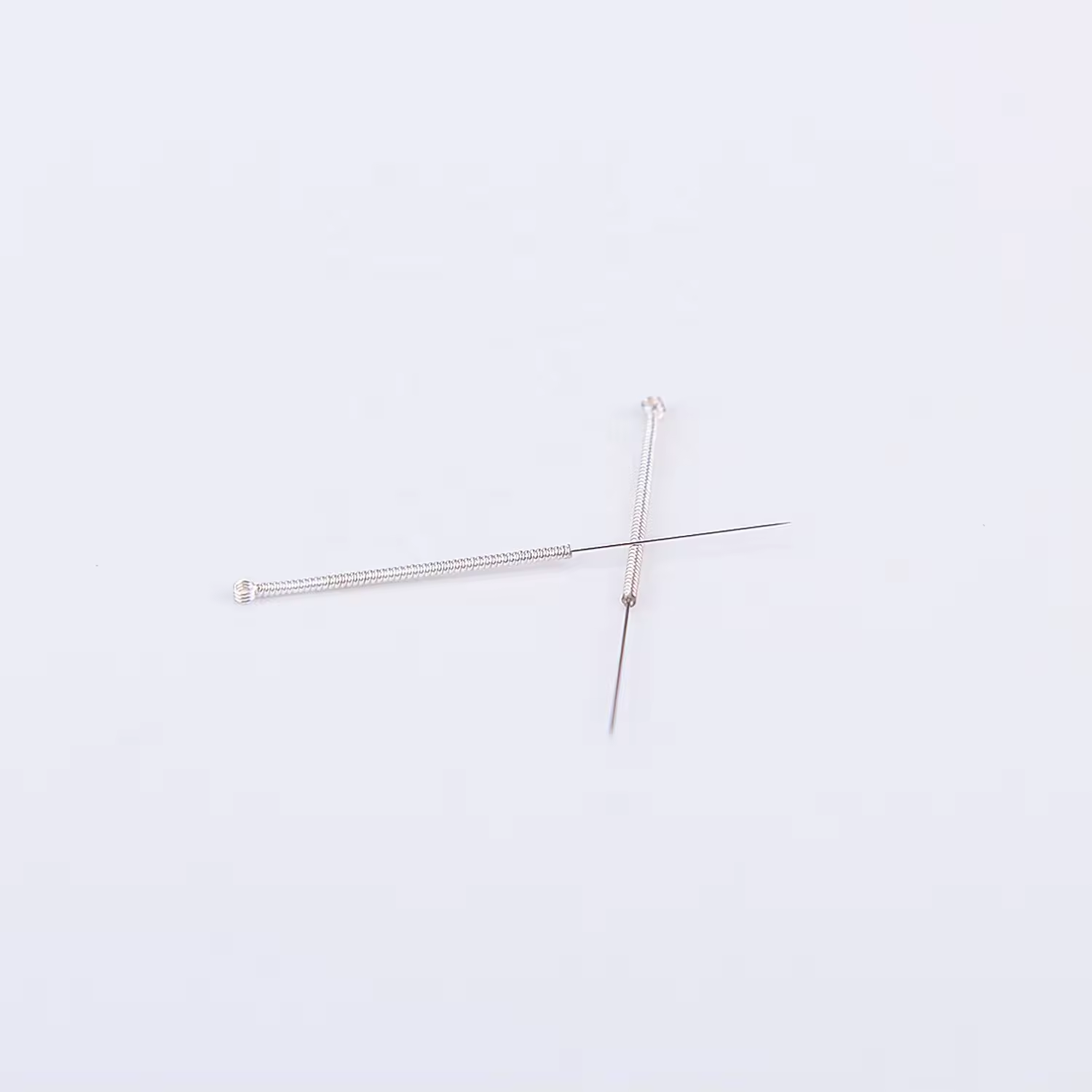
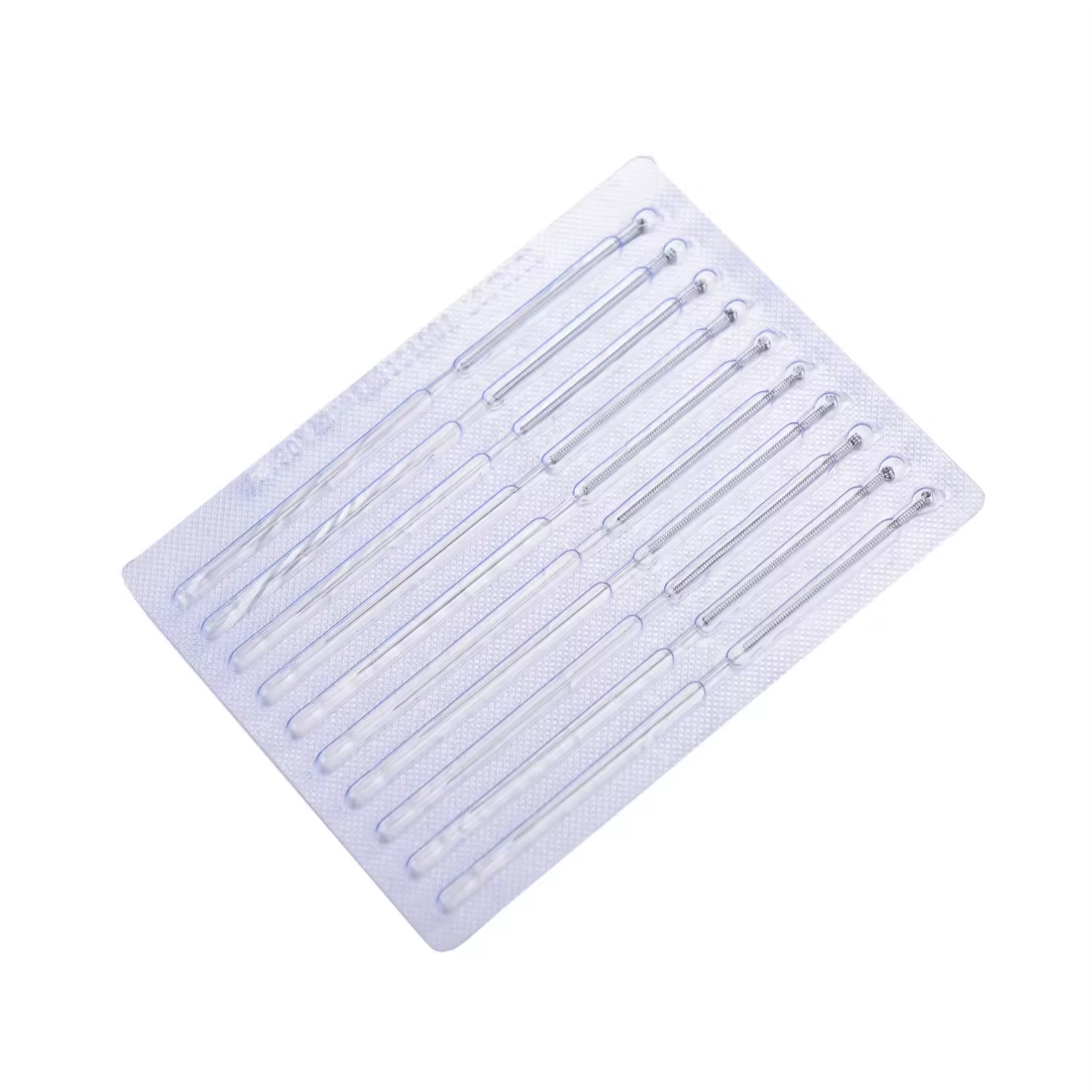
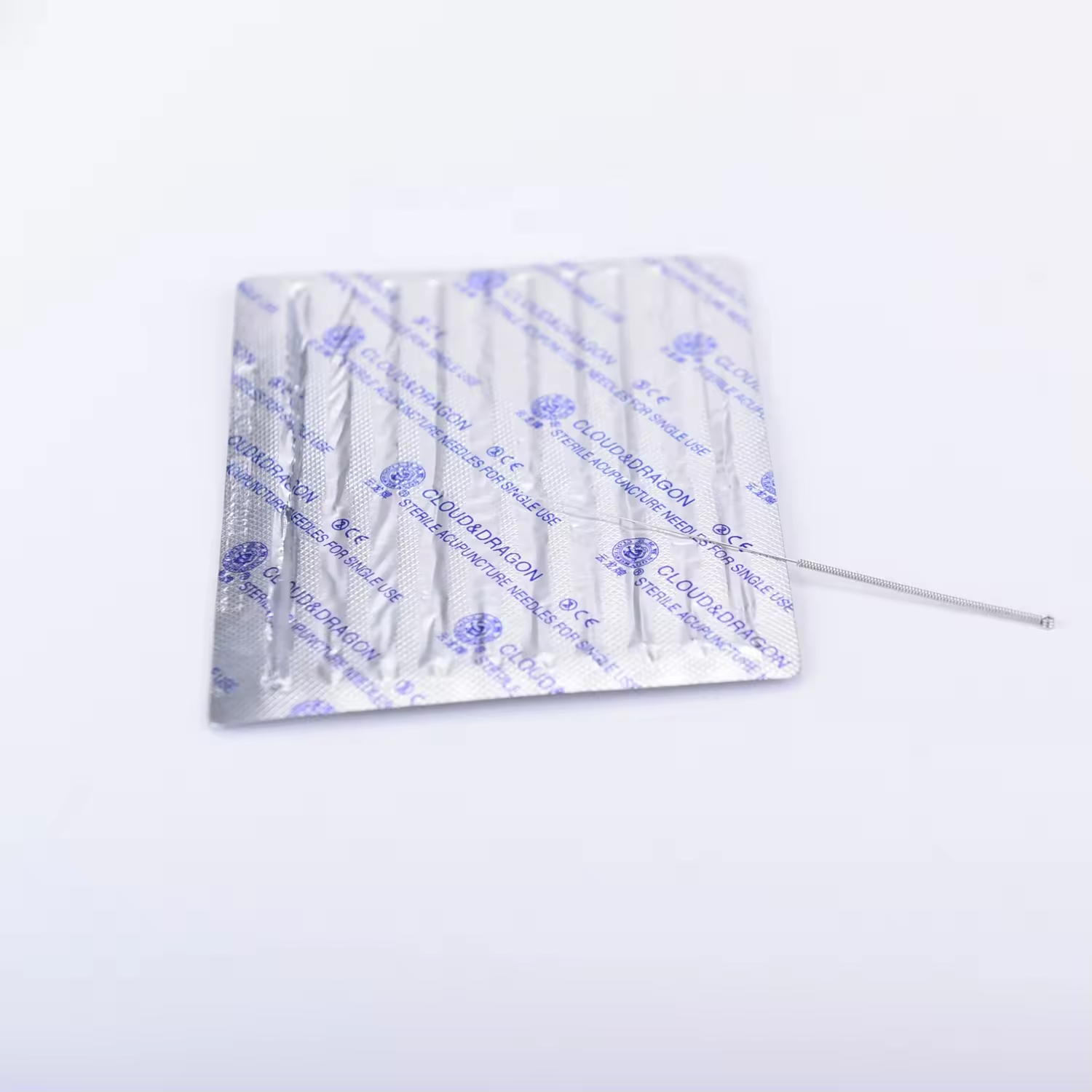
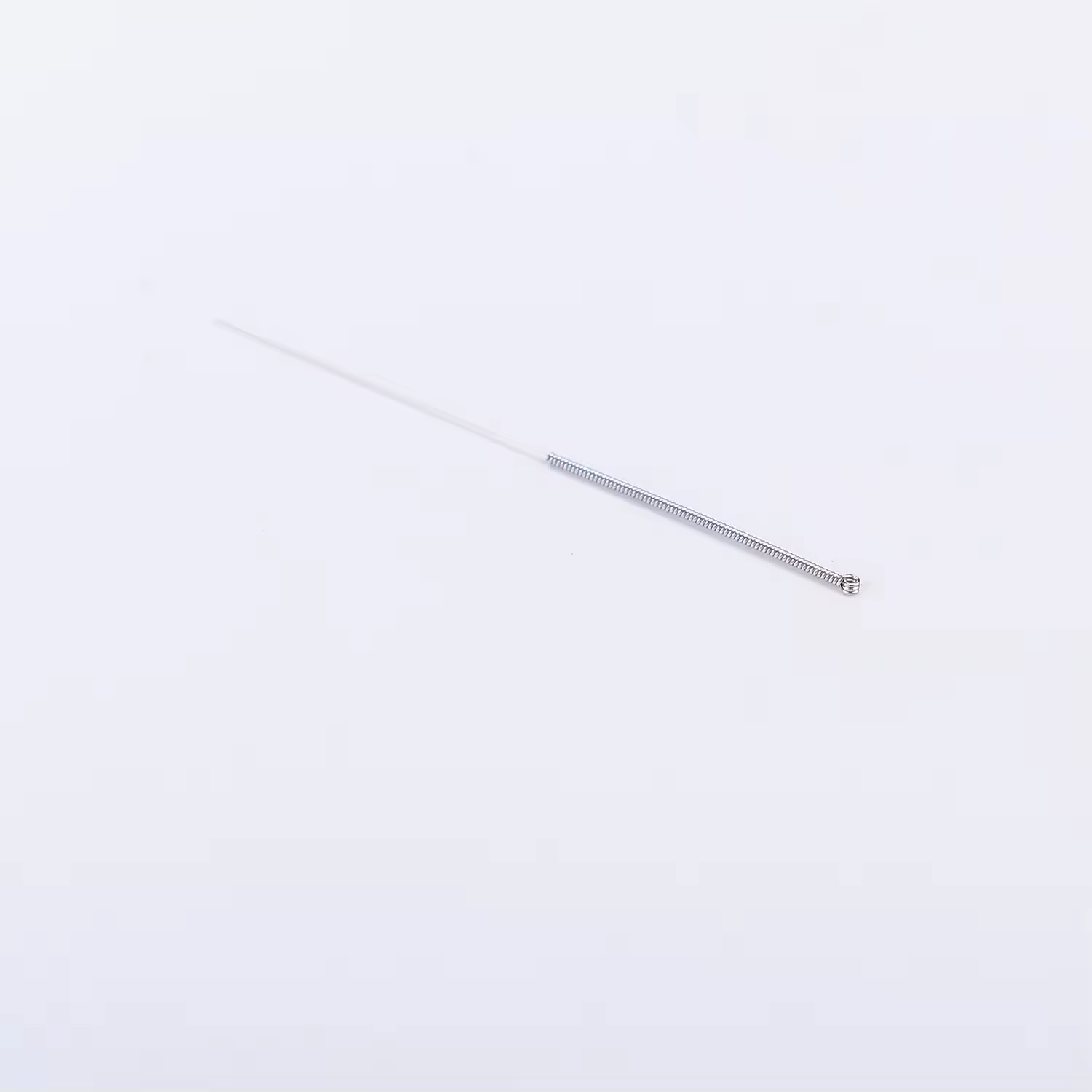
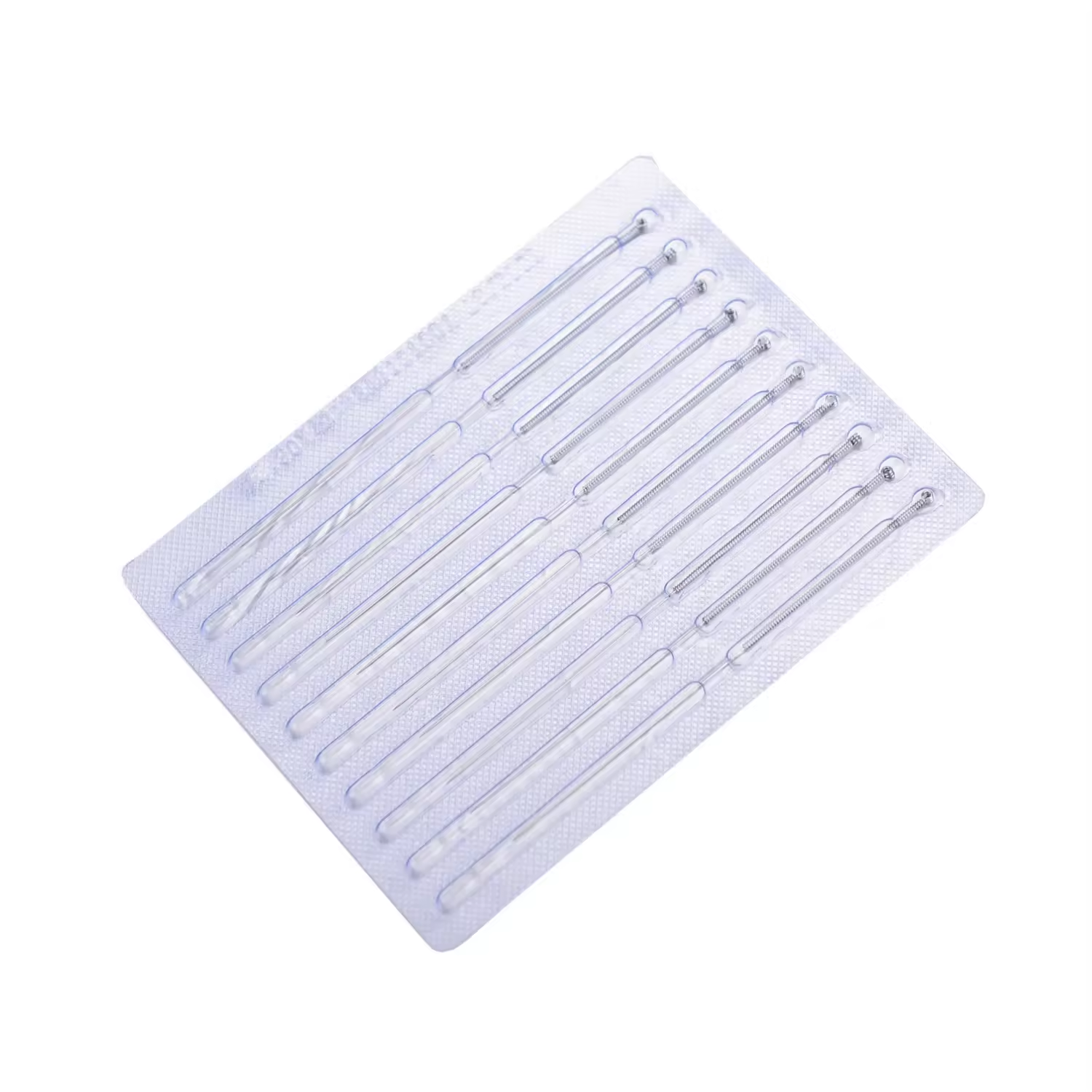





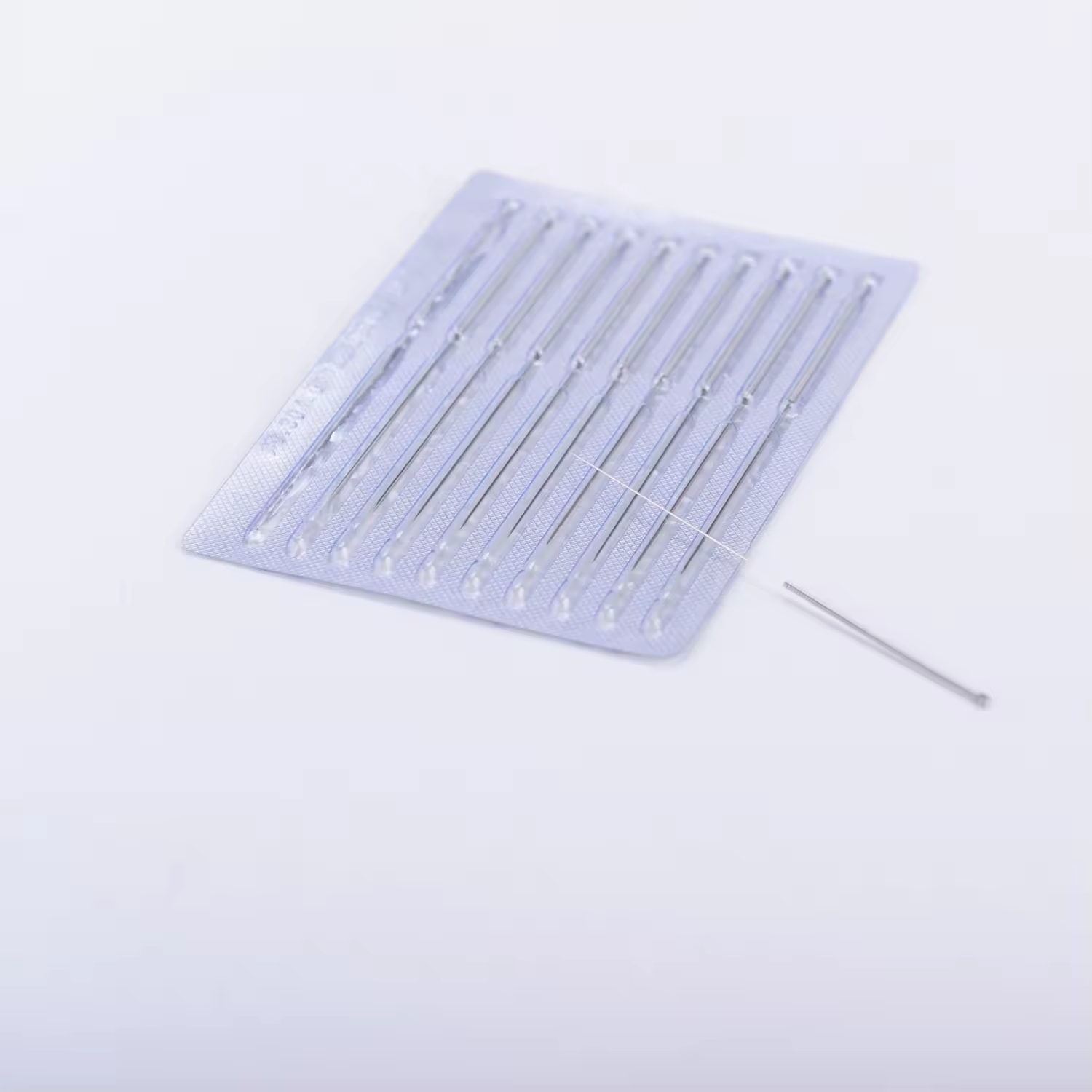
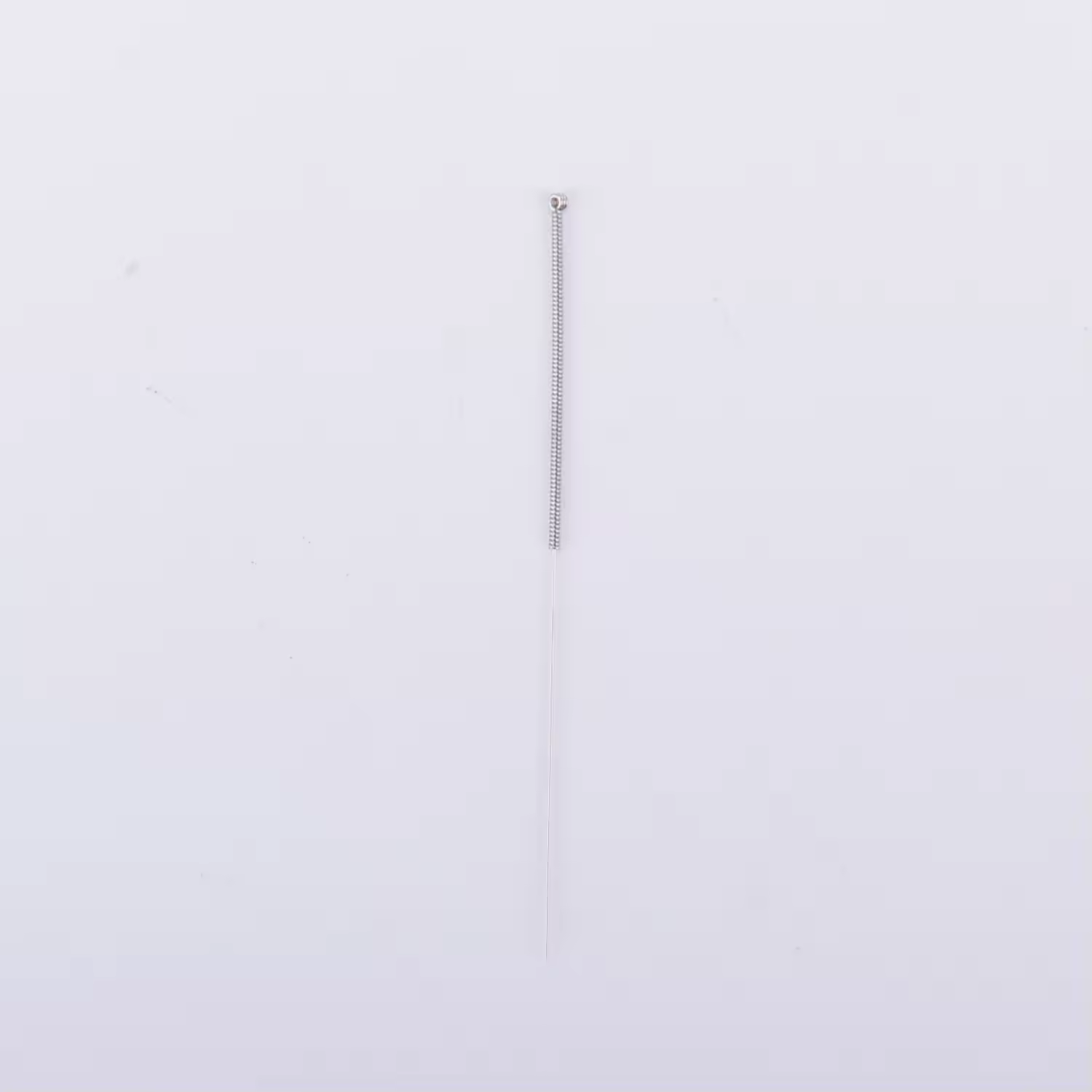

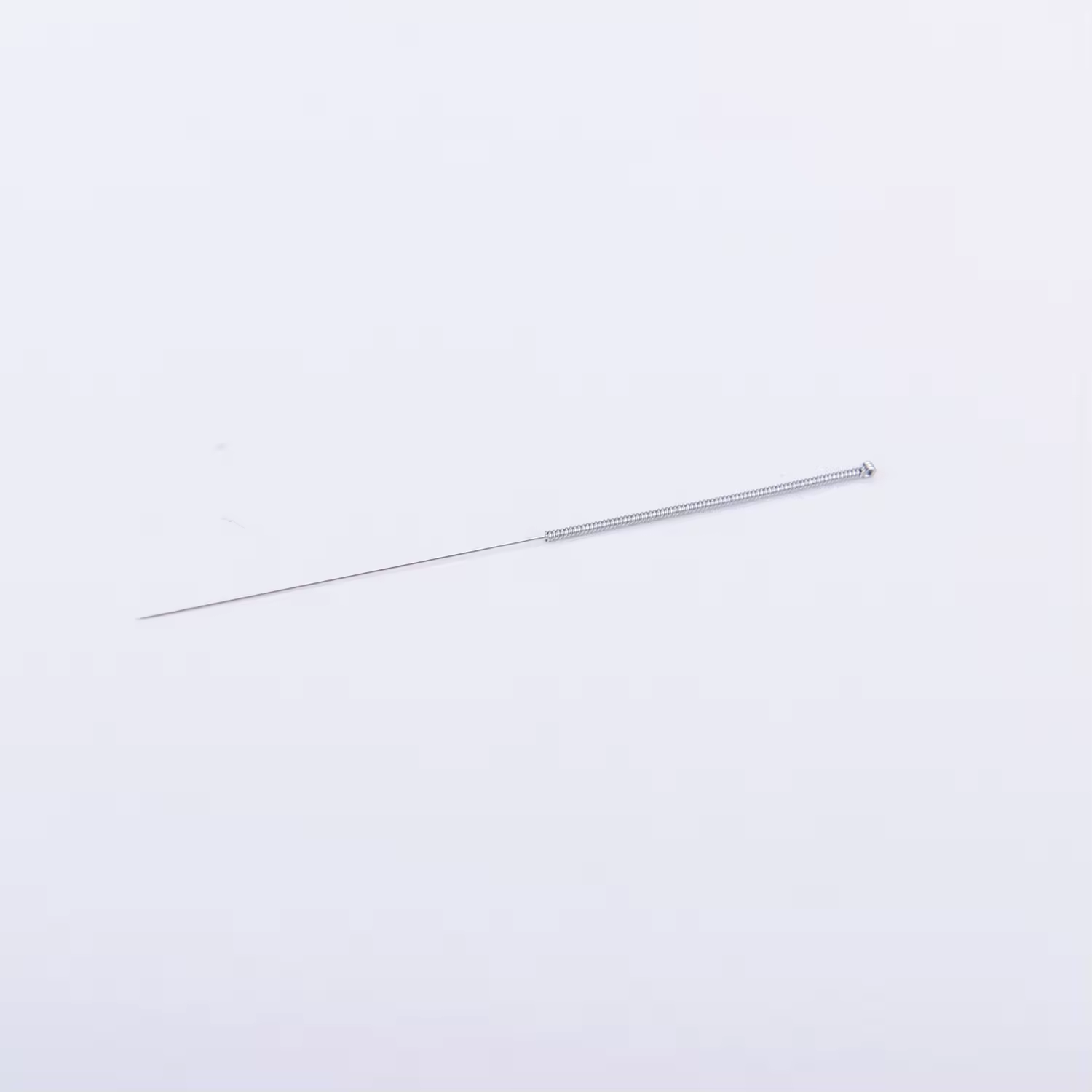

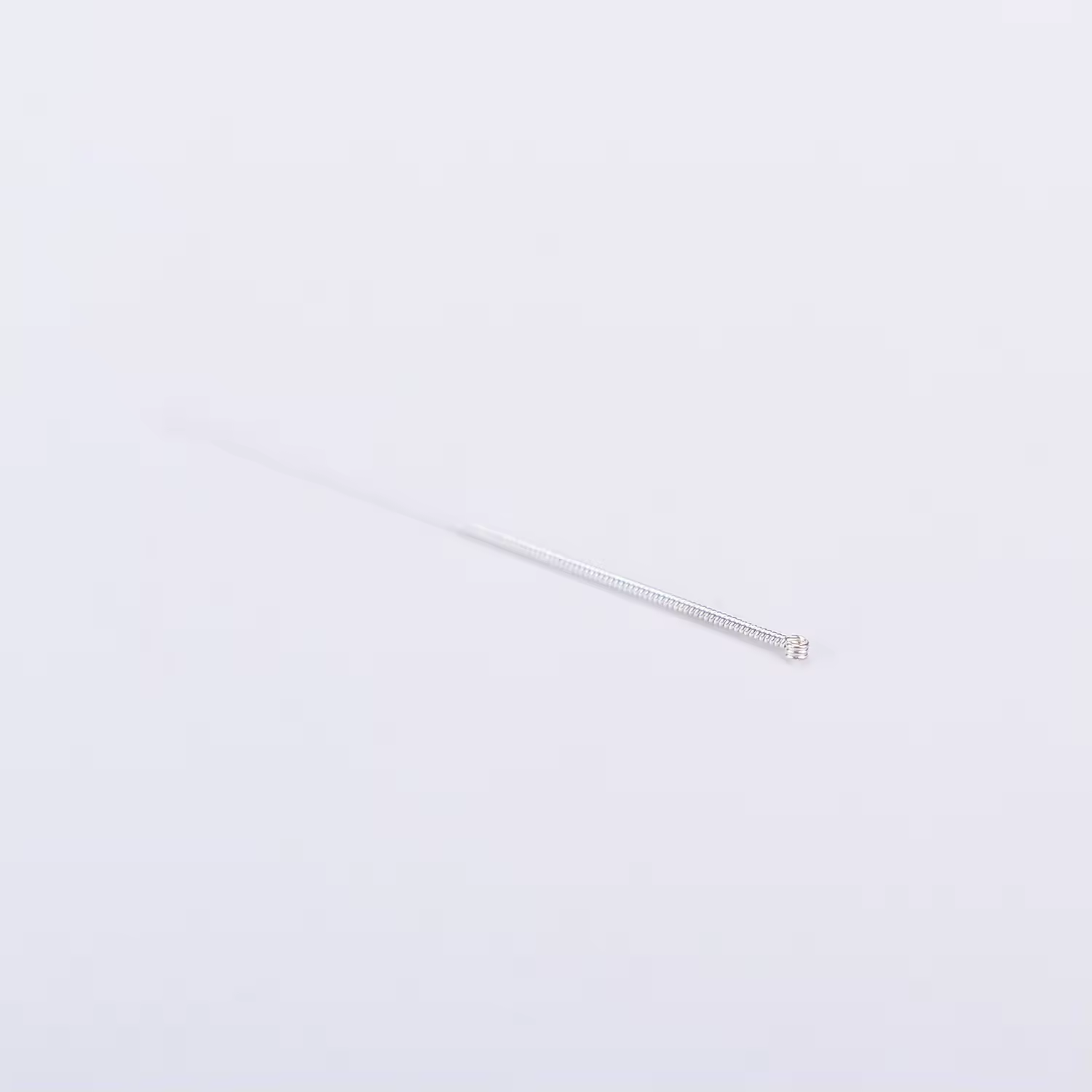


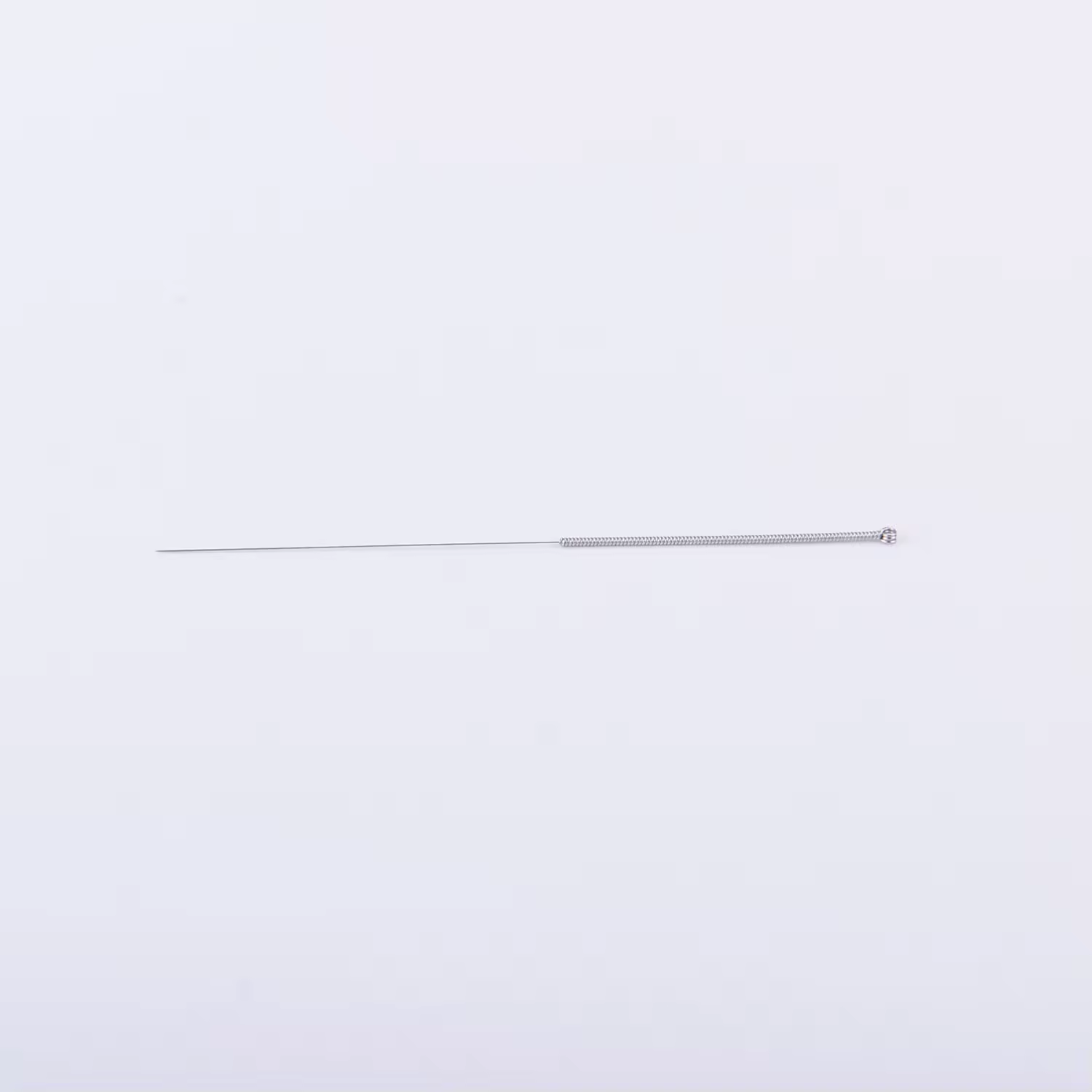
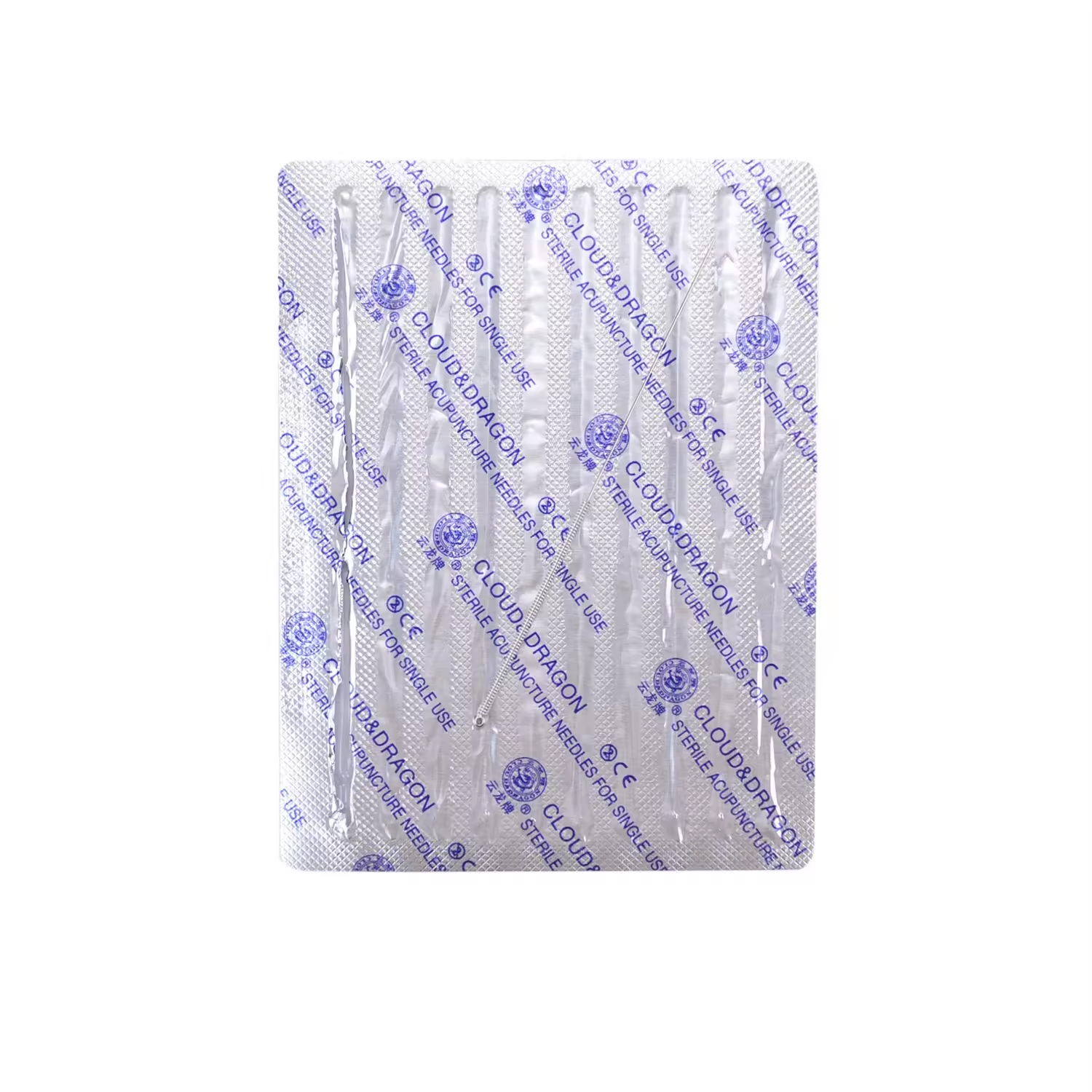
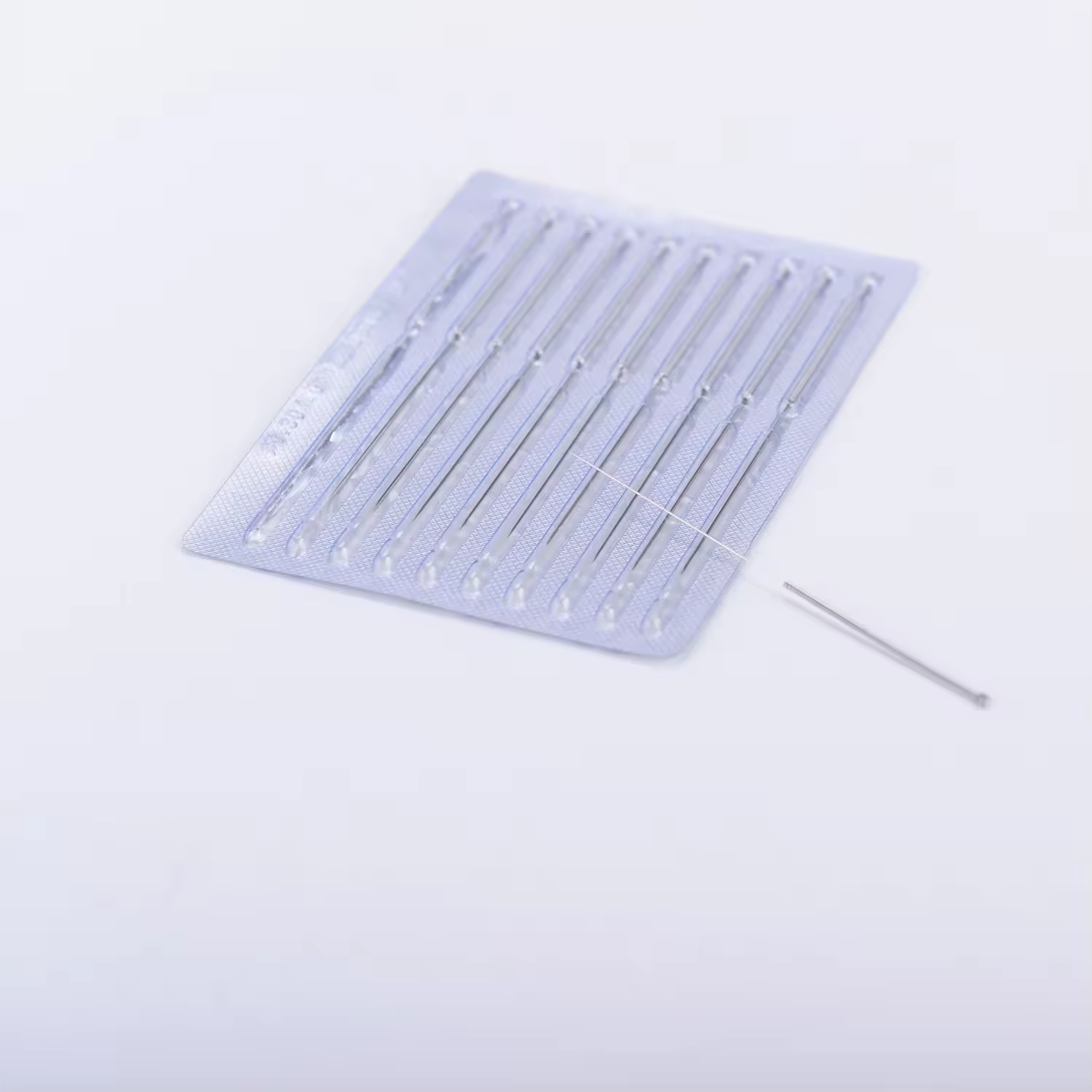
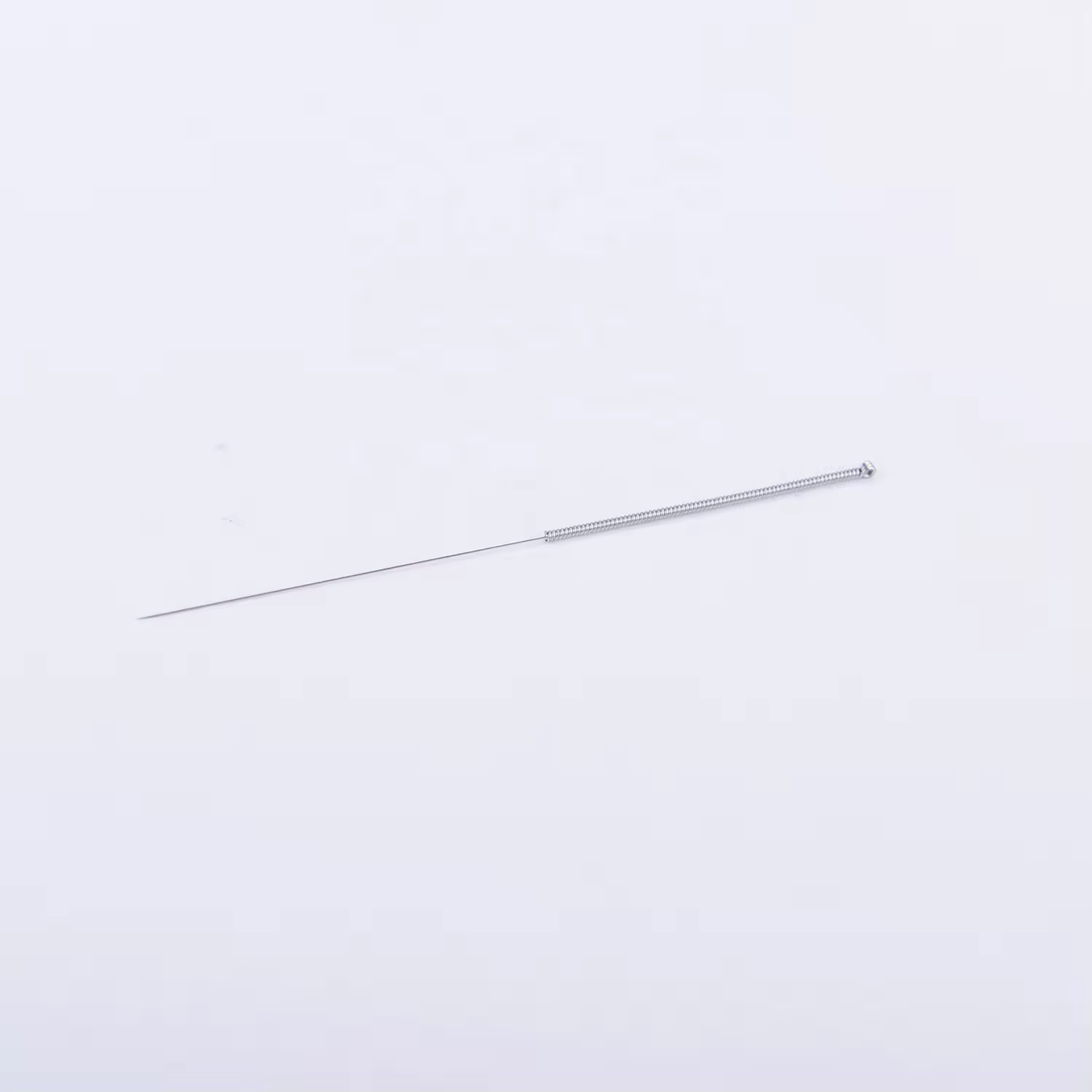


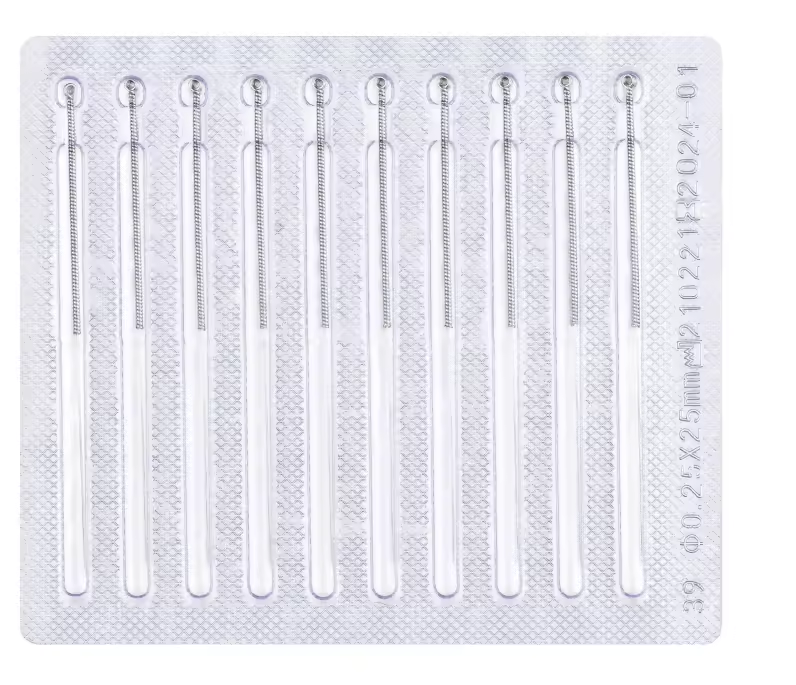
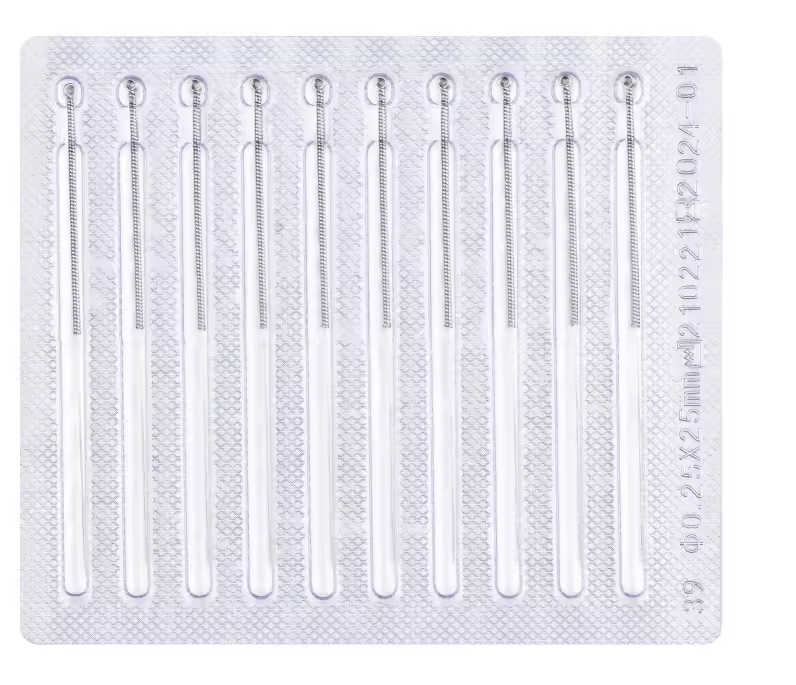

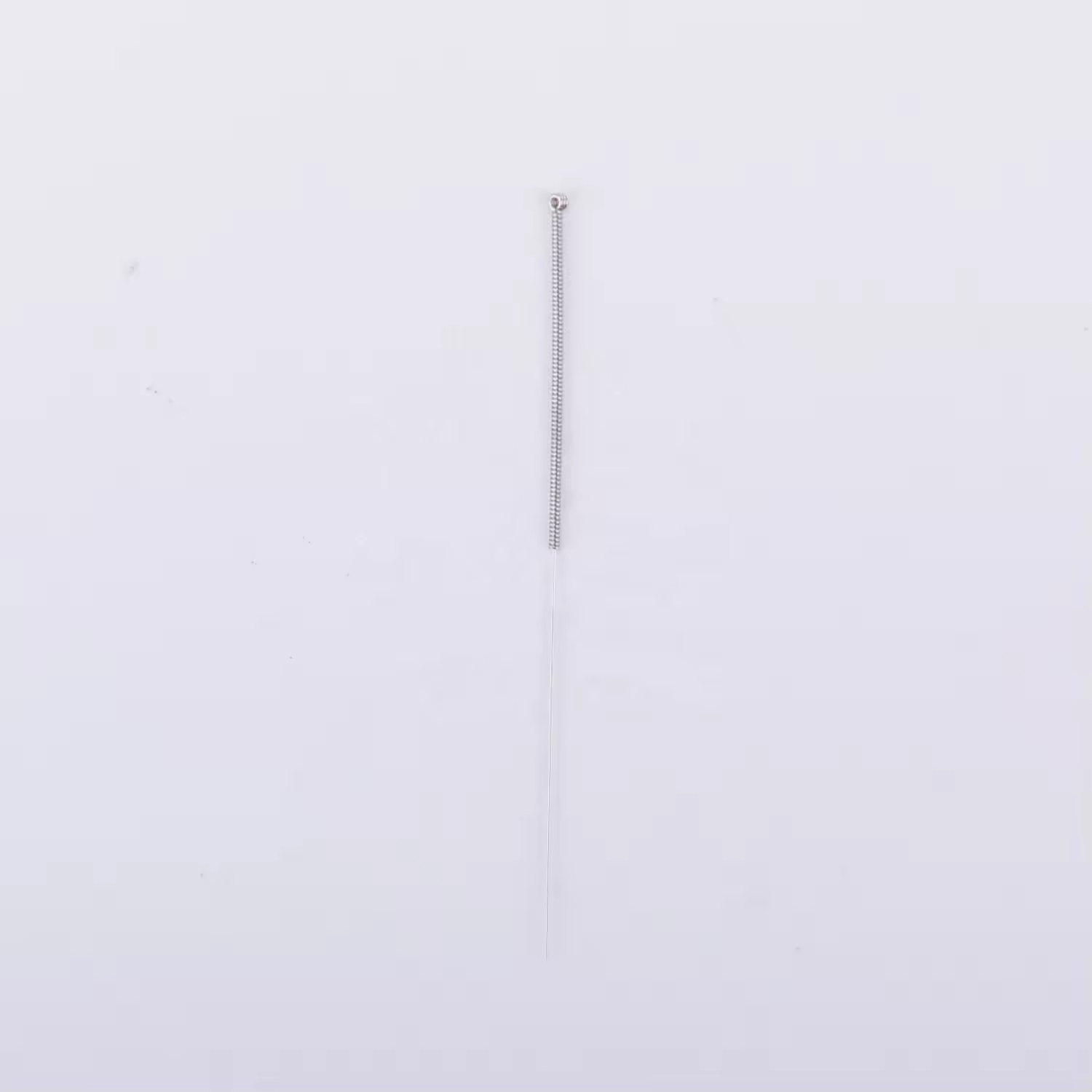
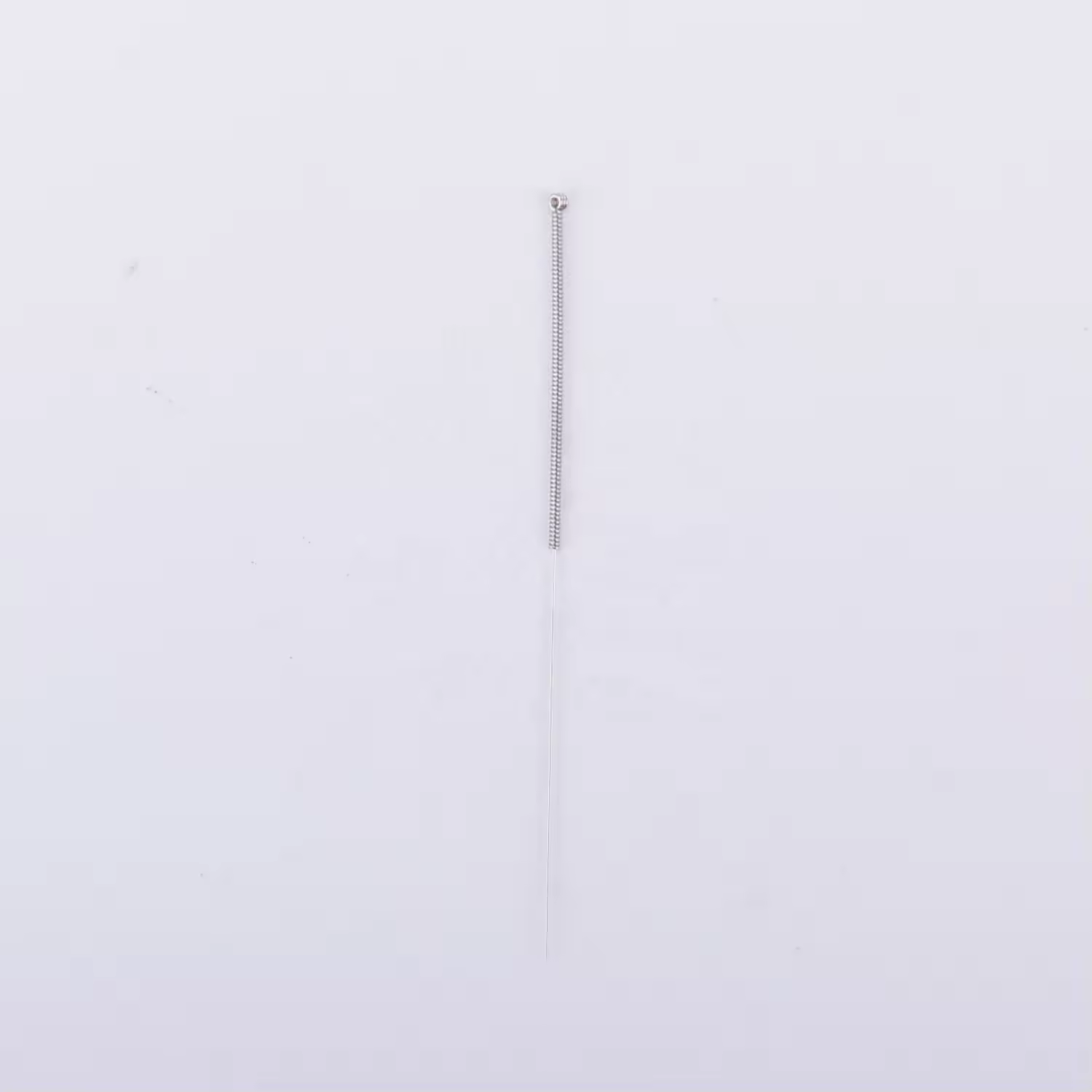
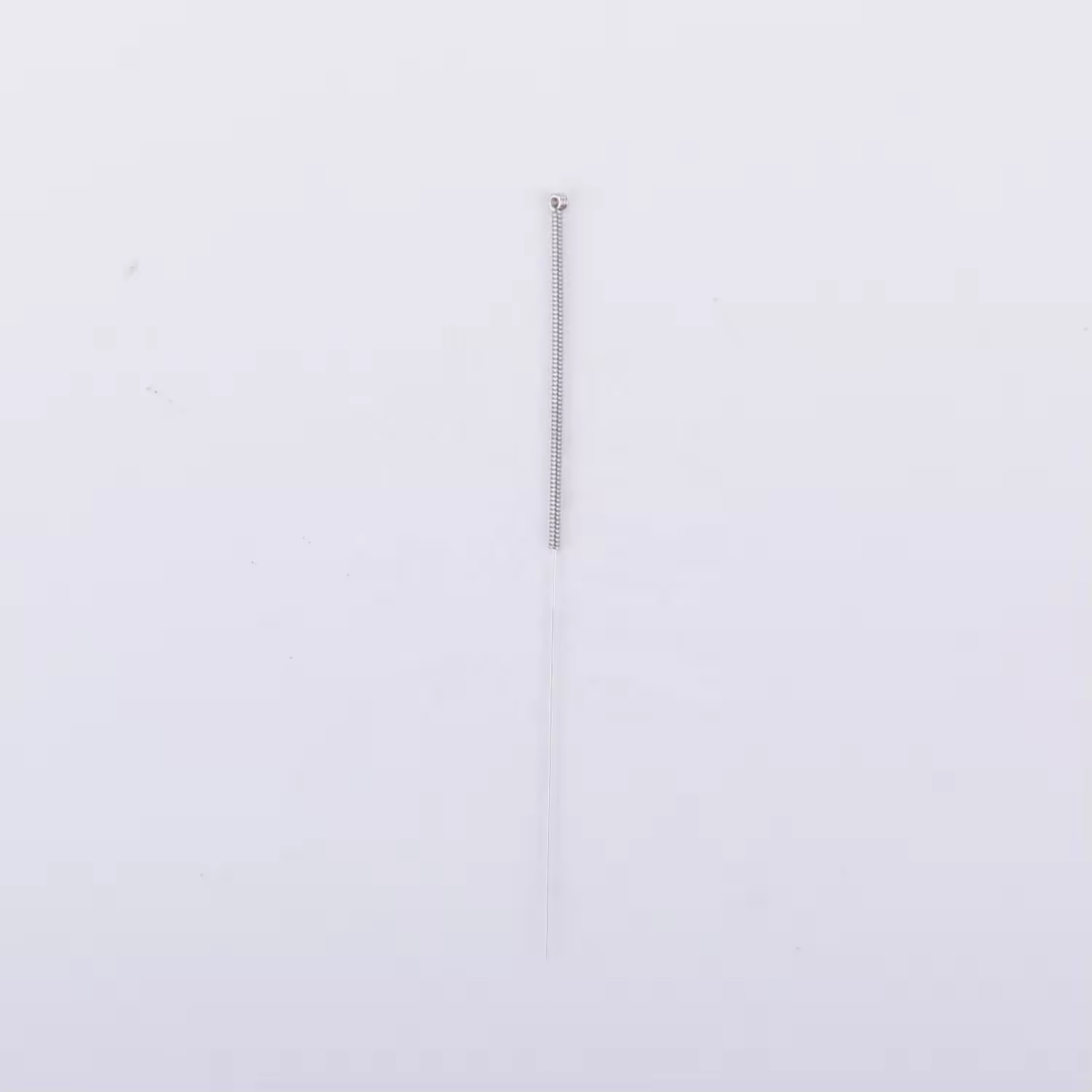
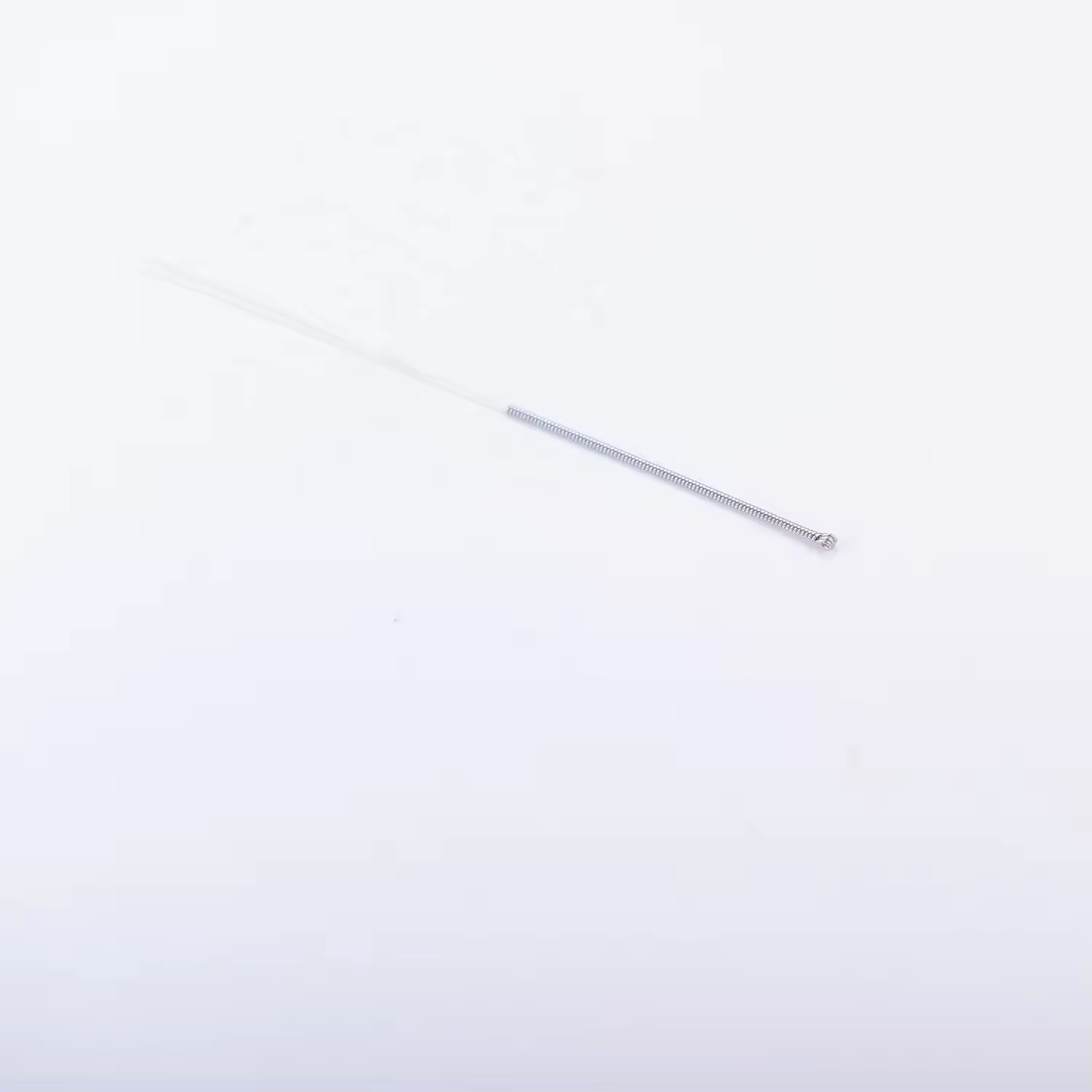
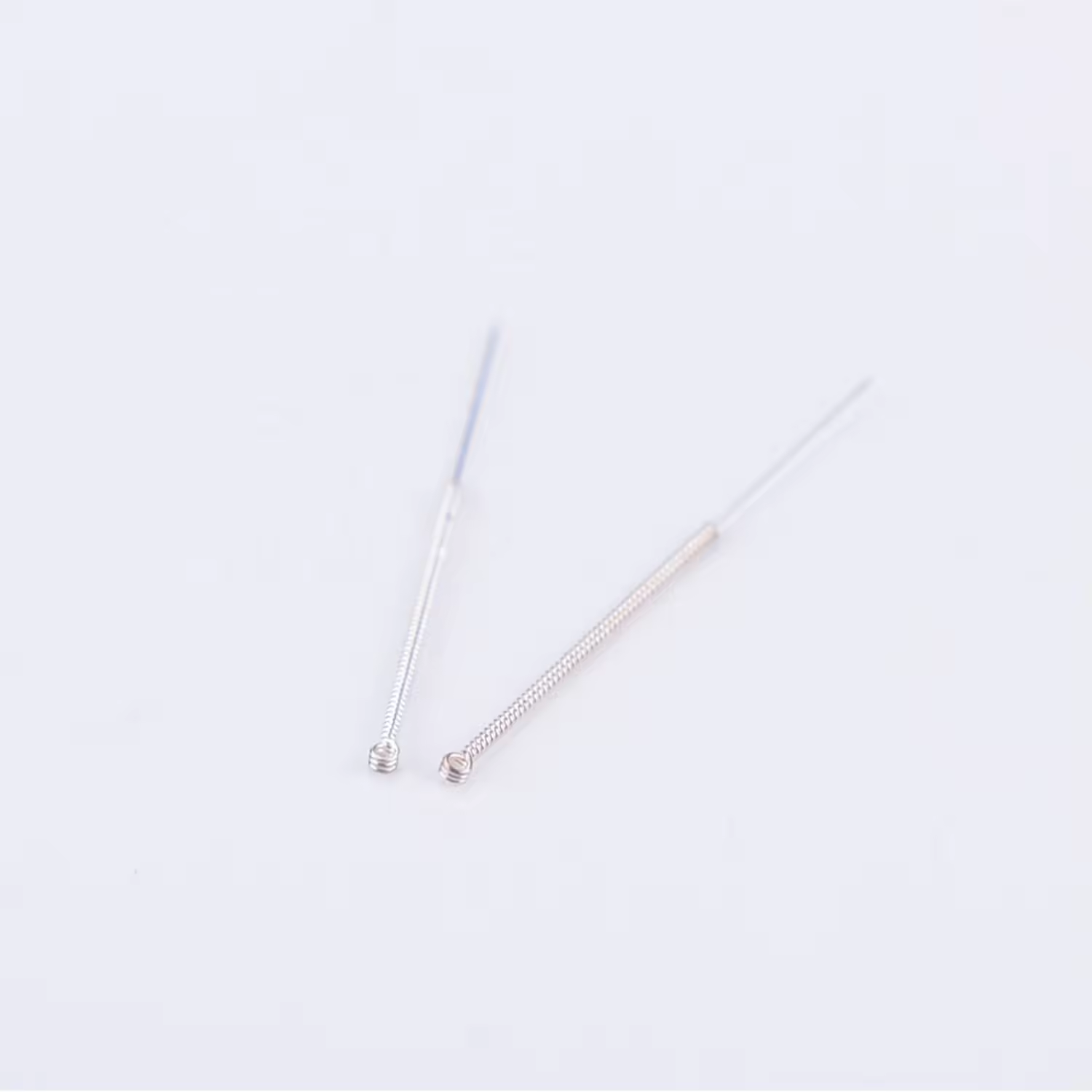
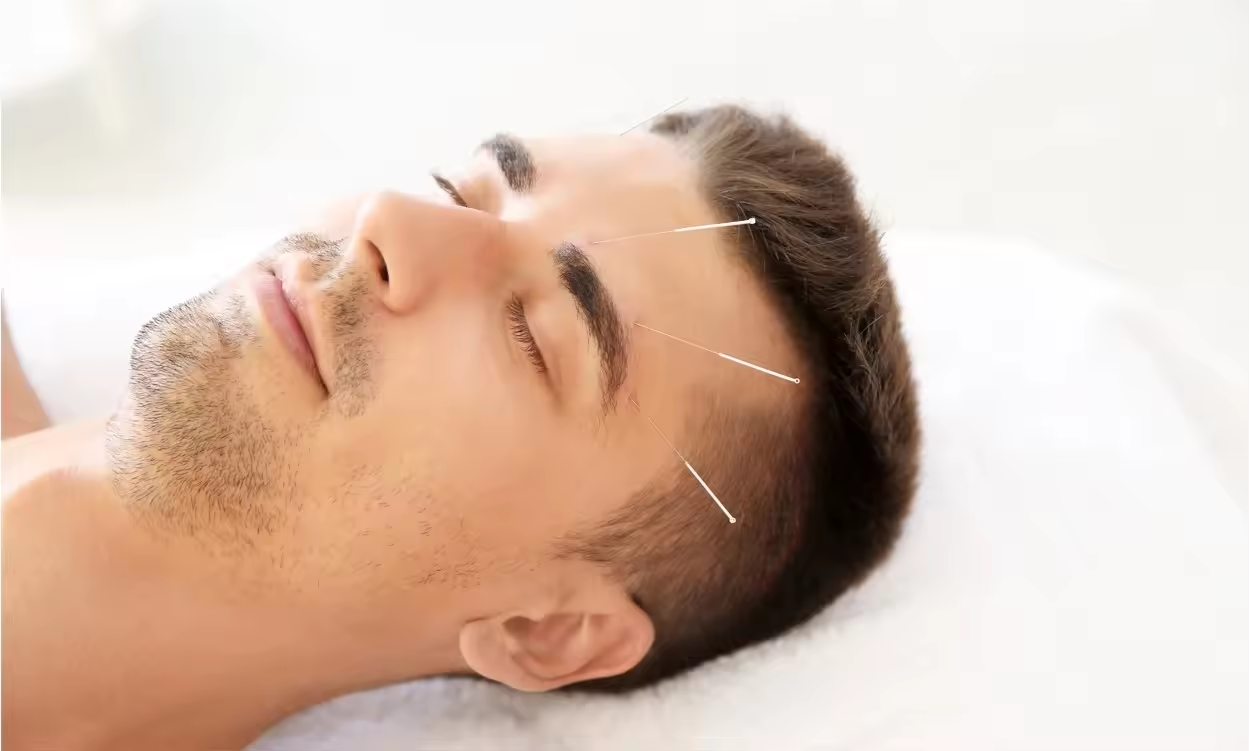


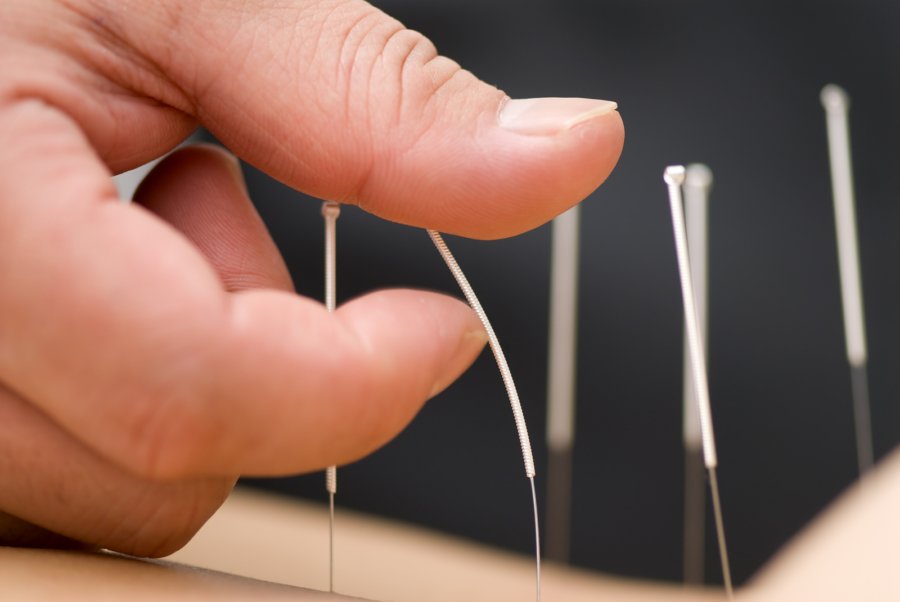
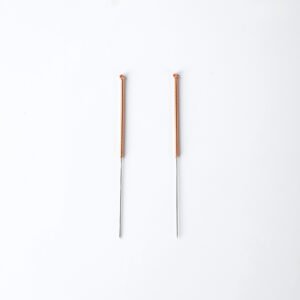
![0,20*40 mm engangsakupunkturnåle [100 pinde/æske]](https://herbalr.com/wp-content/uploads/2024/08/Ha7ae30517c5647e59aad9a686522646cM-300x300.avif)
Anmeldelser
Der er endnu ikke nogle anmeldelser.